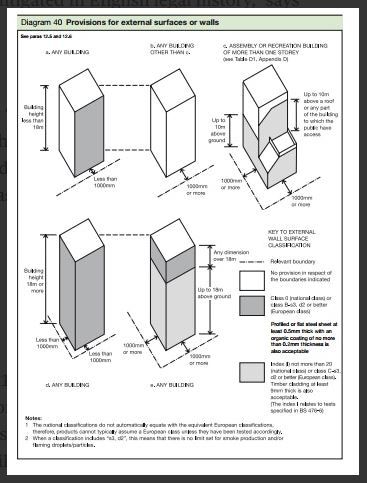- Sign In
- Home
- About
- ICM Training
- ICM Membership
- REGISTERS
- Construction Operative Matrix of Competence
- PAS 8671:2022 ─ Principal Designer
- PAS 8671:2022 ─ PRINCIPAL DESIGNER ─ ICM CRITERIA
- PAS 8671:2022 ─ PD ─ APPLICATION
- PAS 8672:2022 ─ Principal Contractor
- PAS 8672:2022 ─ PRINCIPAL CONTRACTOR ─ ICM CRITERIA
- PAS 8672:2022 ─ PC ─ APPLICATION
- Fire Door Inspector Register - BS8674:2025
- CDM Competence Registry™®
- Organisational Competency: BSA & CDM
- MEMBERS BRIEFINGS
- Newsletters and Blogs
- The ICM Forums
- Contact
- Sign In
Vision Construct 2024
Following the series of major large conference events and, particularly, Vision Construct '23 held at Wembley Stadium at the end of 2023 as the new landscape of construction safety culture was evolving Resibuild Events recently hosted a Roundtable at the Building Centre in London with The Institute Of Construction Management, bringing together industry leaders from companies like Buckley Gray Yeoman, Lockmetal, Sapphire Balconies, Dalux, Airey Miller, and Reynaers Aluminium UK, emphasizing the need for both environmental and social impact. Together, the attendees tackled some of the most pressing issues in construction ...
Much focus was on the findings now written in the Grenfell Inquiry 2 Final Report as published on 4 September 2024 - some seven years after the tragic fire that was found to be wholly avoidable had dutyholders and all the team of actors around the project had delivered a building complying to the functional requirements of the Building Regulations
During the interesting depth of the debate David Jones was able to share his expertise as he is one of only a few designers to have actually designed true fire-safe rainscreen cladding to existing social HRBs across the many thousands of residential tower blocks across the UK
The part the now infamous Approved Document B played in the disaster unfolded during the judge-led Inquiry ─ and paragraphs 12.6 and 12.7 the standards for external walls and insulation which will be the most litigated in English legal history raged

During the seven years since that tragic event much critical debate has raged over the professional media channels citing the slavish adherence to prescriptively replicate the guidance without realising or ignoring the functional requirements ─ there is much confused understanding of the difference between an Approved Document and a functional requirement when, perhaps, there's a difference ...
In this article we clarify and explain ...
Functional Requirements are law ─ Approved Documents are guidance
The functional requirements of the UK Building Regulations are essential performance standards that all building work must meet, regardless of the specific design approach chosen. These requirements are crucial for ensuring the safety, health, and welfare of building occupants and users
While Approved Documents provide valuable guidance, they are not the only way to meet the functional requirements. Designers may choose alternative solutions, but they must demonstrate that these alternatives still satisfy the functional requirements. This approach allows for creativity and innovation in building design while maintaining essential safety and performance standards
The functional requirements of the UK Building Regulations differ from the Approved Documents in several important ways:
- Legal status: The functional requirements are legally binding performance standards that must be met, while the Approved Documents are guidance documents that provide recommendations on how to meet those standards
- Flexibility vs specificity: Functional requirements focus on the essential performance outcomes that must be achieved, allowing for flexibility in how they are met. Approved Documents, on the other hand, provide specific technical solutions and methods
- Mandatory vs optional: Compliance with the functional requirements is mandatory, whereas following the Approved Documents is optional as long as the functional requirements are still satisfied
- Performance-based vs prescriptive: Functional requirements are performance-based, describing what must be achieved rather than how to achieve it. Approved Documents tend to be more prescriptive, offering detailed guidance on particular methods
- Scope: Functional requirements cover all essential aspects of building safety and performance. Approved Documents may not address every possible scenario or innovative solution
- Adaptability: Functional requirements can accommodate various design approaches and new technologies, as long as the performance standards are met. Approved Documents may become outdated as construction techniques evolve
- Innovation: By focusing on outcomes rather than specific methods, functional requirements allow for and encourage innovative solutions. Slavishly following Approved Documents may limit innovation
- Compliance demonstration: Meeting functional requirements may require demonstrating compliance through alternative methods if not following Approved Documents. Simply following Approved Documents provides a straightforward path to compliance
It's crucial for designers to understand that while Approved Documents offer valuable guidance, the functional requirements take precedence. Designers must ensure their solutions meet the performance standards set by the functional requirements, even if this means deviating from the specific recommendations in the Approved Documents
Functional requirements can change during the development phase, though managing these changes requires careful consideration. Here are some key points about changing functional requirements during development:
- Agile approach: In Agile methodologies, changing requirements are expected and even welcomed throughout the development process. This allows for flexibility and responsiveness to evolving project needs
- Change management: A formal change control process should be established to evaluate, approve, and implement changes to functional requirements. This helps maintain project control while allowing for necessary adjustments
- Impact assessment: When changes are proposed, it's crucial to evaluate their impact on other requirements, project timelines, and resources before implementation
- Documentation updates: As requirements change, documentation should be updated accordingly. Proper version control helps track changes and ensures traceability throughout the development process
- Communication: Clear communication with all stakeholders is essential when requirements change. This helps ensure everyone understands the modifications and their implications
- Iterative refinement: An iterative approach to requirements allows for ongoing refinement based on feedback and evolving project needs. Regular reviews and feedback sessions with stakeholders can help identify necessary changes
- Potential challenges: Frequent changes to requirements can lead to scope creep, delays, and increased costs. It's important to balance flexibility with project constraints
- Testing implications: Changes in functional requirements often necessitate updates to test plans and test cases to ensure the modified functionality is properly verified
While changing functional requirements during development is possible and sometimes necessary, it should be managed carefully to maintain project integrity and minimize disruption. A well-defined change management process and clear communication are key to successfully incorporating requirement changes during the development phase.
- Adopt an agile methodology: Agile approaches like Scrum or Kanban are designed to accommodate changing requirements through iterative development and continuous feedback
- Establish a formal change control process: Implement a structured process for evaluating, approving, and implementing changes to requirements. This should include impact analysis and stakeholder approval workflows
- Conduct regular reviews: Hold frequent review sessions with stakeholders to validate and update requirements, ensuring alignment with evolving project needs
- Prioritize requirements: Continuously reassess and prioritize requirements based on their criticality, business value, or user needs. This helps focus efforts on the most important functionalities
- Maintain clear documentation: Keep detailed and well-organized requirements documentation, including version control to track changes and ensure traceability throughout the development process
- Use requirements management tools: Utilize specialized software to efficiently track, manage, and update requirements
- Implement traceability: Assign unique identifiers to each requirement and link them to related business objectives, user stories, or system components. This enables tracking of requirements throughout the development lifecycle
- Foster open communication: Encourage open channels of communication among team members and stakeholders to facilitate timely input and suggestions
- Minimize planning disruptions: While accommodating changes, try to minimize disruptions to ongoing development sprints. Consider implementing changes in subsequent iterations unless absolutely critical
- Evaluate the change management process: Regularly assess and optimize your change management process to resolve any bottlenecks and improve efficiency
- Use visual aids: Employ diagrams, flowcharts, or prototypes to illustrate complex interactions or system behavior, making it easier to communicate and understand changing requirements
.Conflict of Interests Policy Statement.
. Website Design Kent by CARISS
